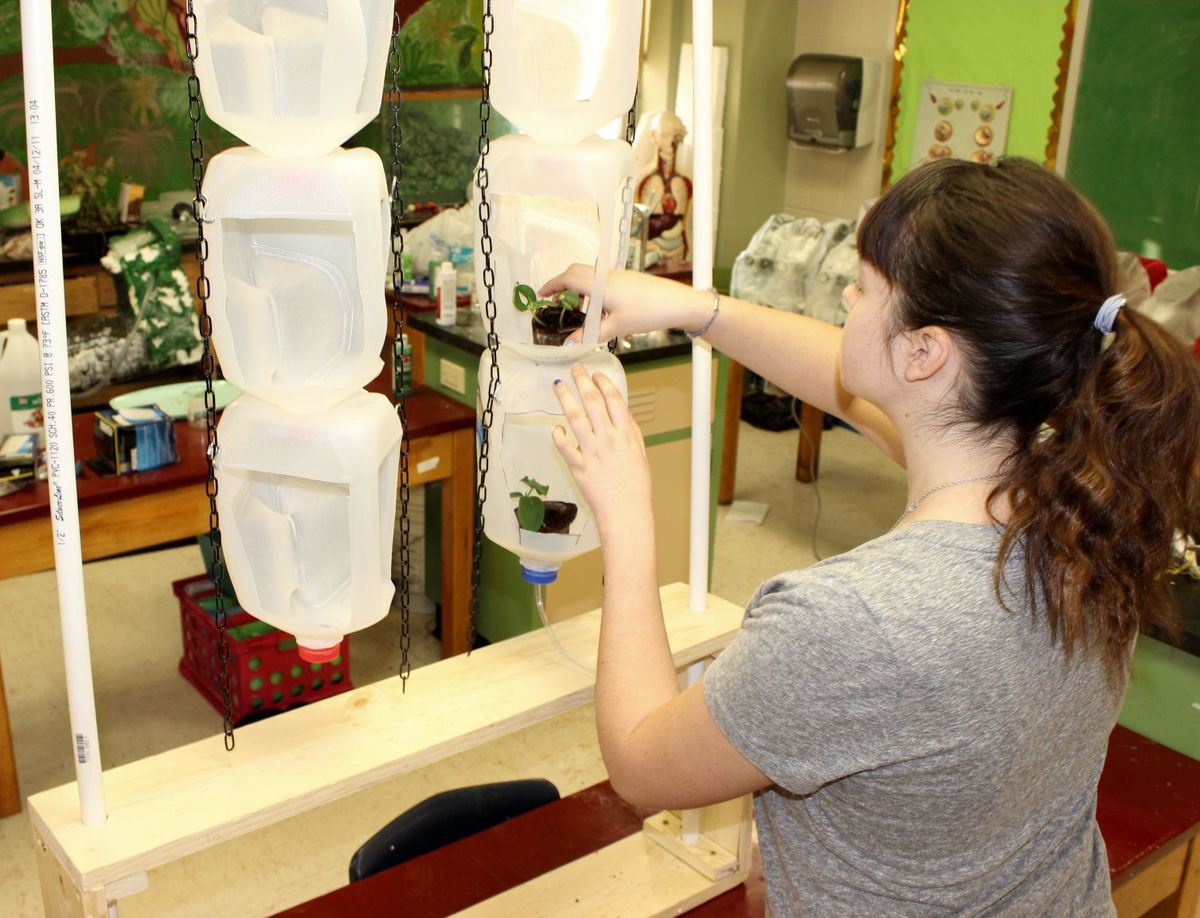
Newell Students Push Organic Vegetable Production
Katie Braaton has a goal in mind for the sometimes forgotten elderly population in the Newell, Nisland and Vale area: that each older resident in those remote regions has access to organic food.
What started as her senior class project has now morphed into a proposal that has been submitted to a national competition aiming to raise enthusiasm in science, technology, engineering and math, or STEM, subjects.
February 14, 2016 | Source: Rapid City Journal | by Emily Niebrugge
Katie Braaton has a goal in mind for the sometimes forgotten elderly population in the Newell, Nisland and Vale area: that each older resident in those remote regions has access to organic food.
What started as her senior class project has now morphed into a proposal that has been submitted to a national competition aiming to raise enthusiasm in science, technology, engineering and math, or STEM, subjects.
Braaton, a Newell High School senior, along with fellow student Zach Barnett and environmental science teacher Heather Brown, have designed and built vertical hydroponics and aquaponics window units from recycled materials.
Those units are used to grow fresh produce.
“It not only saves water, but everyone should have access to organic food,” Braaton said of the science project.
The project was submitted for the Samsung Solve for Tomorrow Contest and has already claimed first place at the state level out of more than 4,100 applicants.
The prize for winning at that level was $20,000 worth of technology and software, which included a Samsung GALAXY Camera and ATIV Book 9 laptop.
The contest encourages teachers and students to solve real-world issues in their community.
The vertical hydroponics unit built in Newell will hold water in an aquifer at its base. Water will flow up through a tube and then down through plants that sit in milk jugs hung vertically. The water gets reused as it flows through the system.
The other project, the aquaponics window unit, holds a fish tank at its base instead of an aquifer. The fish tank doesn’t need to be cleaned, because the waste produced from the fish provides nutrients to the plants in the milk jugs.
The units were designed to fit inside windows and to provide low-maintenance gardening options for those who cannot maintain or do not have space for a full-fledged garden. The aquaponics unit also provides an option to own a pet fish if desired.
Any plant that can fit inside a planter pot about three inches in diameter can be placed inside the jugs and grown. Those plants could include herbs, peppers, cherry tomatoes, lettuce or cucumbers, or just about any dwarf-variety plant.
The idea to apply for the contest came on a whim when Brown received an advertising flyer in the mail. The aquaponics project was already in the works for her class, so Brown figured, “Why not submit it?”
Pause
Current Time 0:00
/
Duration Time 0:00
Loaded: 0%Progress: 0%0:00
Fullscreen
00:00
Unmute
Brown previously taught at the Maryland School for the Blind, and at New York State. She also spent 20 years teaching in Texas and five years in Takini, S.D., before teaching in Newell for the last three years.
She now teaches anatomy, physiology, zoology, biology, environmental science, integrated sciences and astronomy, most of which are advanced science classes. Out of her seven classes, three classes have fewer than five students.
That includes Bratton’s environmental science class, where she is the lone student two days a week. Barnett, who has special needs, joins the class about twice a week.
Being able to teach STEM concepts on a more individual level, and in a way that her students can put into practice, has made a big difference, Brown said.
“So much education has been spoon fed and then regurgitated,” Brown said. “STEM forces you to get out and think outside of the box and apply the knowledge.”
